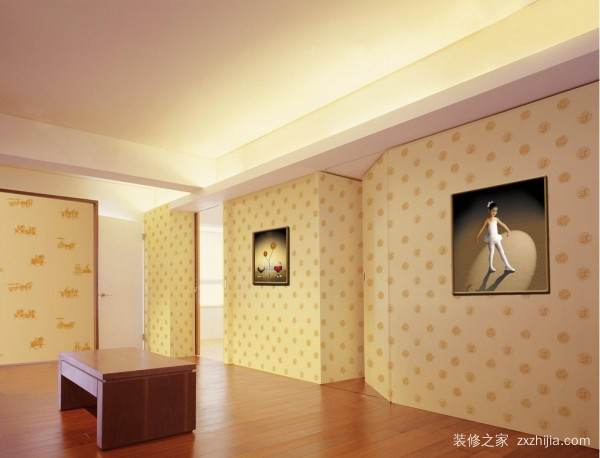In the process of decoration, it is necessary to understand the area of ​​the decoration, because it is easier for us to buy the decoration materials, but many friends do not know how to calculate the area of ​​the decoration, Down, the decoration of the small series, let's talk about it for everyone, how to calculate the wall area , and then come to the parents to introduce the wall decoration strategy.

First, how to calculate the wall area
1. Wall area = floor area *3. For example, if you want to measure the area of ​​latex paint, you can use the floor area to calculate the floor area minus the floor area of ​​the bathroom kitchen and multiply it by 3. For a house with a building area of ​​100 square meters, the area of ​​the wall latex paint is between 200-220.
2, wall area: (length + width) * 2 * room height - door area - window area other:
3. The baseboard is calculated according to the net circumference. As for other different parts, it is decorated with different materials. Some rooms have triangular, trapezoidal or curved parts. The ground and top surface area can be calculated according to the area formula. The wall area is the same as above.
Second, the wall decoration strategy introduction
1, tiles, tiles, is a major project in the current renovation. Most of the tiles are applied to walls in kitchens, toilets, balconies, etc. The biggest advantage of tile decoration may be resistance to dirt, and the most important problem is the treatment of the waterproof layer, because most of the places in the kitchen and toilet have water problems, so the waterproofing of the wall should be highly attention.
2. If you don't have a waterproof new house or an old house that needs to be replaced with tiles, you need to re-do the waterproof layer. The main method for the treatment of the waterproof layer is to use a professional waterproofing agent such as 911 waterproofing agent for the height of the floor and the wall of 1 meter. For positions above 1 m on the wall, a bit cheaper asphalt oil can be used for waterproofing. If the economy does not allow it, you can also use asphalt or resin to make the floor waterproof. The location of the ground and the ground 20 cm must be thick.

3, wallpaper, wallpaper for wall decoration is quite common, its types mainly include paper wallpaper, chemical fiber wallpaper, plastic wallpaper, and cloth wallpaper is generally called wall cloth, not classified as wallpaper. The wallpaper can be printed with patterns, the patterns are varied, the color is rich, and the construction is convenient and fast.
4, spray coating is a method of painting water-soluble paint, using the characteristics of oil-in-water, using a pressurized spray gun for construction. Can form a variety of color textures, the effect is light and has a three-dimensional effect. The main advantage of the spray application method is that the construction is fast and the construction period can be greatly shortened. The shortcoming is that it is difficult to maintain in the later stage, and it is easy to cause the entire surface to be scarred due to a small part of the draping. Unless it is treated in a large area, it cannot be restored.
5, wood veneer, wood veneer is now some high-end decoration practices. Generally, a 3 PCT veneer is attached to the 9 PCT floor and then fixed with a mosquito nail. Wood veneers are the most important reason for their appearance, and the wood veneer has a variety of natural textures that give the interior a gorgeous effect.
6. Due to the different designs, the details cannot be described here, but it should be noted that the wood veneer method is just like the Chinese painting method, and it must be left blank. The idea of ​​wrapping the wall with wooden boards is not rational. In addition to increasing the engineering budget, it does not help the overall effect.
How to calculate the wall area, wall decoration strategy, Xiaobian introduced it to friends here, I hope that through the above article, you can understand how to calculate the wall area, if you want to know more home improvement information, Please continue to pay attention to the decoration home network.
A ball check valve is a check valve in which the closing member, the movable part to block the flow, is a spherical ball. In some ball check Valves, the ball is spring-loaded to help keep it shut. For those designs without a spring, reverse flow is required to move the ball toward the seat and create a seal. The interior surface of the main seats of ball check valves are more or less conically-tapered to guide the ball into the seat and form a positive seal when stopping reverse flow.
Ball check valves are often very small, simple, and cheap. They are commonly used in liquid or gel minipump dispenser spigots, spray devices, some rubber bulbs for pumping air, etc., manual air pumps and some other pumps, and refillable dispensing syringes. Although the balls are most often made of metal, they can be made of other materials, or in some specialized cases out of artificial ruby. High pressure HPLC pumps and similar applications commonly use small inlet and outlet ball check valves with both balls and seats made of artificial ruby, for both hardness and chemical resistance. After prolonged use, such check valves can eventually wear out or the seat can develop a crack, requiring replacement. Therefore, such valves are made to be replaceable, sometimes placed in a small plastic body tightly-fitted inside a metal fitting which can withstand high pressure and which is screwed into the pump head.
There are similar check valves where the disc is not a ball, but some other shape, such as a poppet energized by a spring. Ball check valves should not be confused with Ball Valves, which is a different type of valve in which a ball acts as a controllable rotor to stop or direct flow.
A diaphragm check valve uses a flexing rubber diaphragm positioned to create a normally-closed valve. Pressure on the upstream side must be greater than the pressure on the downstream side by a certain amount, known as the pressure differential, for the check valve to open allowing flow. Once positive pressure stops, the diaphragm automatically flexes back to its original closed position.
A swing check valve or tilting disc check valve is check valve in which the disc, the movable part to block the flow, swings on a hinge or trunnion, either onto the seat to block reverse flow or off the seat to allow forward flow. The seat opening cross-section may be perpendicular to the centerline between the two ports or at an angle. Although swing check valves can come in various sizes, large check valves are often swing check valves. The flapper valve in a flush-toilet mechanism is an example of this type of valve. Tank pressure holding it closed is overcome by manual lift of the flapper. It then remains open until the tank Drains and the flapper falls due to gravity. Another variation of this mechanism is the clapper valve, used in applications such firefighting and fire life safety systems. A hinged gate only remains open in the inflowing direction. The clapper valve often also has a spring that keeps the gate shut when there is no forward pressure. Another example is the backwater valve (for sanitary drainage system) that protects against flooding caused by return flow of sewage waters. Such risk occurs most often in sanitary drainage systems connected to combined sewerage systems and in rainwater drainage systems. It may be caused by intense rainfall, thaw or flood.
A stop-check valve is a check valve with override control to stop flow regardless of flow direction or pressure. In addition to closing in response to backflow or insufficient forward pressure (normal check-valve behavior), it can also be deliberately shut by an external mechanism, thereby preventing any flow regardless of forward pressure.
A lift-check valve is a check valve in which the disc, sometimes called a lift, can be lifted up off its seat by higher pressure of inlet or upstream fluid to allow flow to the outlet or downstream side. A guide keeps motion of the disc on a vertical line, so the valve can later reseat properly. When the pressure is no longer higher, gravity or higher downstream pressure will cause the disc to lower onto its seat, shutting the valve to stop reverse flow.
An in-line check valve is a check valve similar to the lift check valve. However, this valve generally has a spring that will 'lift' when there is pressure on the upstream side of the valve. The pressure needed on the upstream side of the valve to overcome the spring tension is called the 'cracking pressure'. When the pressure going through the valve goes below the cracking pressure, the spring will close the valve to prevent back-flow in the process.
A duckbill valve is a check valve in which flow proceeds through a soft tube that protrudes into the downstream side. Back-pressure collapses this tube, cutting off flow.
A pneumatic non-return valve.
Multiple check valves can be connected in series. For example, a double check valve is often used as a backflow prevention device to keep potentially contaminated water from siphoning back into municipal water supply lines. There are also double ball check valves in which there are two ball/seat combinations sequentially in the same body to ensure positive leak-tight shutoff when blocking reverse flow; and piston check valves, wafer check valves, and ball-and-cone check valves.
Check Valves, Water Check Valves, Brass Check Valves, Sanitary Check Valves
ZHEJIANG KINGSIR VALVE CO., LTD. , https://www.cn-kingsir.com